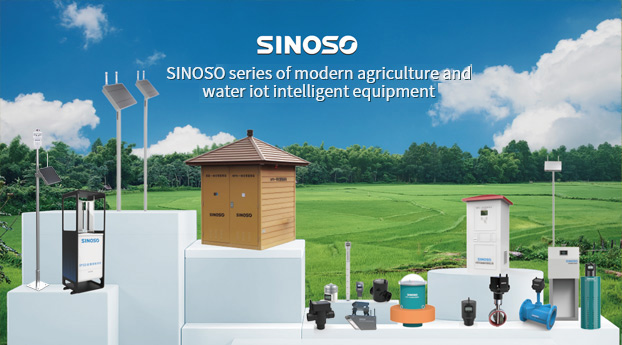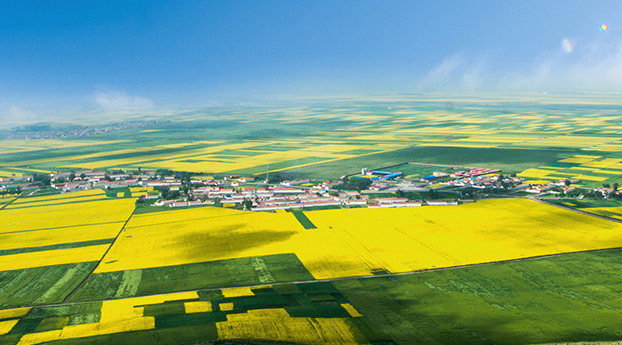In 2022, the No.1 Central Document was released to comprehensively promote the key work of rural revitalization
Release time:2022-02-23 Views:455
Opinions of the CPC Central Committee and The State Council on Completing the Key Work of Comprehensively Promoting Rural Revitalization in 2022
(January 4, 2022)
At present, the global COVID-19 pandemic is still spreading, world economic recovery is fragile, and climate change is a prominent challenge. China faces daunting tasks in economic and social development. The CPC Central Committee believes that to cope with the century-old changes and the century-old epidemic smoothly and promote steady and healthy economic and social development, we must meet the major strategic needs of the country, stabilize the basic market of agriculture, do a good job in agriculture, rural areas and farmers, continue to comprehensively promote rural revitalization, and ensure steady increase in agricultural production, steady increase in farmers' incomes, and stability and tranquility of the countryside.
To do our work on agriculture, rural areas and farmers well in 2022, we must follow the guidance of Xi Jinping Thought on Socialism with Chinese Characteristics for a New Era, fully implement the guiding principles of the 19th CPC National Congress and all plenary sessions of the 19th CPC National Congress, fully implement the guiding principles of the Central Economic Work Conference, adhere to the general principle of seeking progress while ensuring stability, base ourselves on the new stage of development, apply the new vision for development, foster a new pattern of development, and promote high-quality development. To promote common prosperity, uphold and strengthen the Party's overall leadership over the work related to agriculture, rural areas and farmers, firmly uphold the two bottom lines of ensuring national food security and preventing the return to poverty on a scale of 1/2, highlight annual tasks, targeted measures, and results-oriented, give full play to the leading role of grass-roots Party organizations in rural areas, and do key work related to rural development, rural construction, and rural governance in a solid and orderly manner. We made further progress in rural revitalization and took new steps in modernization of agriculture and rural areas.
First, we will do our utmost to ensure grain production and the supply of major agricultural products
1) We will keep the area sown to grain and output stable throughout the year. We will ensure that the rice bowl of the Chinese people is firmly in our own hands at all times, and that the rice bowl mainly contains Chinese grain. We will fully implement the equal responsibility of the Party and the government for food security, strictly assess the responsibility system for food security, and ensure that the acreage sown with grain is stable and the output of grain is kept above 50 million metric tons. Major producing areas, major selling areas, and balanced production and marketing areas should all be protected in terms of area and output, and the overall grain production capacity of major producing areas should be constantly increased, and the grain self-sufficiency rate in major selling areas should be effectively stabilized and increased, so as to ensure that areas in balance between production and marketing are basically self-sufficient in grain. We will promote the development of a national industrial belt for food security. We will vigorously carry out a green, high-quality and efficient campaign, carry out a quality grain project, and raise the yield and quality of grain per unit area. We will promote deep water saving and water control in agriculture in the Yellow River Basin, and stabilize the grain sown area by improving water use efficiency and developing dryland farming. We should actively deal with the adverse effects of late sowing of wheat, strengthen field management in winter and spring, and promote weak seedlings to become strong.
2. Vigorously implement the project to increase production capacity of soybeans and oil crops. We will increase subsidies for arable land rotation and incentives for major oil-producing counties, and focus on supporting suitable areas, key varieties, and business and service operators. We will spread banded cropping of corn and soybeans in the Huang-Huai-hai, northwestern and southwestern regions, carry out grain and soybean crop rotation in northeast China, and carry out trials to replace drought with water and rice with beans in some groundwater over-extraction areas and well-irrigated rice fields in cold regions of Heilongjiang Province. Expanding rapeseed in idle winter fields in Yangtze River Basin. Demonstration of soybean cultivation on saline-alkali land was carried out. We will support efforts to expand the area of camellia oil plantations and upgrade low-yielding forests.
(3) Ensuring the supply of "vegetable basket" products. We will step up efforts to implement the system of mayors taking responsibility for the basket of vegetables. Long-term support policies to stabilize pig production, stabilize basic production capacity, and prevent production fluctuations. We will accelerate the expansion of beef, mutton and dairy production, and carry out trials and demonstrations to transform and upgrade grassland animal husbandry. We will stabilize the area for aquaculture and improve the quality of fishery development. We will keep the number of vegetable fields in large and medium-sized cities stable throughout the year, vigorously promote the construction of facilities for vegetables in the north and bases for transporting vegetables from the south to the north, and improve the emergency supply capacity of vegetables. We will improve the cotton price target policy. We will explore ways to carry out full cost insurance and plantation income insurance for sugarcane. We will carry out trials to renovate old natural rubber plantations.
4. Ensuring farmers' income from grain production. We will improve the mechanism for ensuring farmers' income from grain farming in accordance with the goal of making it profitable for farmers to grow grain and encouraging major producing areas to harvest grain. We will increase incentives for major grain-producing counties and innovate cooperation mechanisms for grain-producing and marketing regions. We will support family farms, farmers' cooperatives and leading enterprises in agricultural industrialization in growing more and better grain. We will focus on key weak links and small farmers, accelerate the development of social agricultural services, support agricultural service companies, farmers' cooperatives, rural collective economic organizations, community-level supply and marketing cooperatives and other major entities in developing single-link, multi-link and whole-process production custody services, and carry out order farming, processing and logistics, and product marketing, so as to raise the overall benefits of grain growing.
5. Coordinated regulation and control of major agricultural products We will improve the monitoring and early warning system for the whole industrial chain of agricultural products, promote the establishment of a unified information release system for supply and demand of agricultural products, and strengthen regulation and emergency support by classification and classification of agricultural products. We will deepen reform of the regulatory system and mechanisms for grain purchase and marketing, carry out special rectification efforts, and strictly punish systematic corruption in accordance with the law. We will strengthen the construction of smart grain depots, promote the integration of civil air defense techniques, and strengthen dynamic monitoring of grain stocks. Strict control of corn - based fuel ethanol processing. We will do a good job in stockpiling and distributing agricultural supplies such as chemical fertilizers to ensure supply and prices remain stable. We will give priority to conservation, implement the action plan on grain conservation, deepen efforts to reduce grain savings and losses across the entire grain production, transportation, storage, and consumption chain, strengthen education on food security, and oppose food waste.
2. Strengthening the basic support for modern agriculture
(6) Implement "long teeth" cultivated land protection measures. The Party and the government share the responsibility for protecting arable land, and strictly observe the red line of 1.8 billion mu of arable land. In the order of cultivated land and permanent basic farmland, red line for ecological protection, and urban development boundary, three control lines were drawn and implemented in an overall manner, and the total amount of cultivated land and the positions of the full targets and tasks for the protection of permanent basic farmland were assigned level by level. The central and local governments signed responsibility letters for the targets for the protection of cultivated land, which were used as rigid indicators to implement strict assessment, one-vote rejection, and lifelong accountability. Cultivated land is mainly used for the production of grain, cotton, oil, sugar, vegetables and other agricultural products as well as forage and feed. Permanent basic farmland is mainly used for grain production. In principle, all high-standard farmland is used for grain production. We will guide the new development of the forest and fruit industry, encourage the use of the "four famine" resources, and do not compete with grain for land. We will implement and improve the policy of balancing the appropriation and replenishment of cultivated land, and establish a mechanism for monitoring the whole process of project approval, implementation, inspection, management and protection of supplementary cultivated land, so as to ensure that the arable land that can be used stably in the long term is replenished, and that the production capacity of supplementary cultivated land is equal to that of the arable land that is occupied. We will improve the measures for overall state management of inter-provincial supplementary farmland. We will intensify supervision over the law enforcement of cultivated land and strictly investigate and punish illegal use of cultivated land for non-agricultural development. We will strengthen control over the use of cultivated land and strictly control the conversion of cultivated land into other agricultural land. We will consolidate and improve the safe use of polluted farmland. We will prudently and orderly carry out pilot projects to rectify unappropriated rural farmland for building houses. Consolidate the "greenhouses" problem of the special cleanup and improvement results. We will implement a system for reviewing and examining the transfer of industrial and commercial capital to rural land and preventing risks.
7. Completing the phased task of building high-standard farmland. By 2022, 100 million mu of high-standard farmland will be built, and 400 million mu of efficient water-saving irrigated land will be built. Overall planning and simultaneous implementation of high-efficiency water-saving irrigation and high-standard farmland construction. Local governments should step up efforts to upgrade medium - and low-yielding farmland and raise the level of farmland productivity. To study and formulate plans for increasing the irrigated area of farmland. We will implement water resources allocation projects for key water sources and major water diversion projects. We will strengthen the construction and renovation of large and medium-sized irrigated areas, plan to build a number of modern irrigated areas in areas with suitable water and soil resources, and give priority to building large and medium-sized irrigated areas into high-standard farmland. We will further promote the state black land protection project. 80 million mu of black land has been protected under cultivation. We will actively tap potential to increase cultivated land, and support the appropriate and orderly development of qualified reserve resources such as saline-alkali land into cultivated land. To formulate plans and implementation plans for comprehensive utilization of saline-alkali land. We will improve saline-alkali land by classification, and promote the transformation from mainly treating saline-alkali adapted crops to breeding more saline-alkali tolerant plants on saline-alkali adapted land. We will support the development of national demonstration zones for agricultural high-tech industries in saline-alkali and arid and semi-arid areas. The third national soil survey was launched.
8. Advancing research in key agricultural core technologies such as provenance The action plan for revitalizing the seed industry will be fully implemented. We will accelerate the survey and collection of agricultural germplasm resources and strengthen accurate identification and evaluation. We will promote the development of a major national innovation platform in the seed industry. Major agricultural biological breeding projects will be launched. We will speed up the implementation of projects to tackle key core agricultural technologies, implement a system of "revealing-ranking" and "coordination between ministries and provinces", and carry out trials of long-term research and development projects. Strengthening the construction of modern agricultural industrial technology system. We will carry out trials of subsidies for R&D and promotion of major varieties. The Seed Law has been implemented, the system of substantive derivative varieties has been implemented, the protection of intellectual property rights in the seed industry has been strengthened, and illegal and criminal acts such as infringement of brand sets have been severely cracked down on according to law.
9. Improving the research, development and application of agricultural machinery equipment. We will comprehensively review areas of weakness, strengthen coordinated efforts to tackle key problems in the engineering of agricultural machinery and equipment, and accelerate R&D and manufacturing of high-horsepower machinery, small machinery for hilly and mountainous areas, facilities and horticulture, and high-end intelligent machinery, which will be included in key national R&D programs to provide long-term and stable support. We will implement the policy of subsidizing the purchase and application of agricultural machinery, and optimize the payment of subsidies. We will improve the mechanism for evaluating the performance of agricultural machinery, promote the availability of both import and export of subsidy machinery and the availability of superior machinery, focus on supporting agricultural machinery such as grain drying, crawler operation, zonal planting of corn and soybeans, and rapeseed harvesting, and promote large-scale intelligent agricultural machinery. We will upgrade emission standards for new agricultural machinery. We will carry out trials to integrate research, development, manufacturing and application of agricultural machinery.
10. Accelerating the development of facility agriculture. Facilities such as plastic greenhouses, solar greenhouses and multiplex greenhouses will be developed according to local conditions. We will concentrate on building factory facilities for growing seedlings. We will encourage the development of new types of farming facilities such as intensive industrial farming and three-dimensional ecological farming. We will promote research and development and application of facilities and equipment technologies such as the integration of water and fertilizer, automation of feeding and intelligent environmental control. On the basis of protecting the ecological environment, explore the use of vacant and abandoned land that can be developed to develop facility agriculture.
11. Effectively preventing and responding to major agricultural disasters. We will increase capacity building and investment in agricultural disaster prevention, mitigation and relief. We will repair agricultural and water conservancy infrastructure damaged by floods, and strengthen the dredging of ditches and canals as well as the construction and management of reservoirs and pumping stations. We will strengthen reserves of emergency supplies for flood control and drought relief. We will strengthen monitoring and early warning systems for agricultural and rural, water conservancy, and meteorological disasters, and enhance our ability to cope with extreme weather. We will strengthen the system for prevention and control of animal and plant diseases at the community level, and ensure that the responsibility for the prevention and control of major animal and plant diseases, such as African swine fever and Armyworm, is assigned to local areas, and that the number of people assigned to their posts is determined. Prevention and control of the source of zoonotic diseases. We will strengthen the prevention and control of invasive alien species, and do a good job in general survey and monitoring, entry quarantine and domestic prevention and control. Those that have been introduced and caused serious harm should be controlled and effectively eliminated with a one-by-one approach. We will strengthen research on the impact of medium - and long-term climate change on agriculture.
3. We will resolutely safeguard the bottom line against large-scale poverty
12. Improving monitoring and assistance mechanisms. We will accurately determine the targets for monitoring, include rural households that are at risk of returning to poverty or experiencing sudden severe difficulties in the monitoring scope, simplify the working process, and shorten the identification time. Social assistance, medical security and other assistance measures will be implemented in a timely manner in response to emerging problems caused by disasters or epidemics. We will strengthen monitoring to ensure that there are no gaps in our work and no gaps in our policies. We will continue to carry out post-poverty evaluation work.
13. Promoting a sustained increase in the income of people lifted out of poverty. We will encourage areas out of poverty to rely more on development to consolidate and expand their achievements in poverty alleviation, so that people living out of poverty will enjoy a better life. We will consolidate and upgrade industries with distinctive features in areas that have been lifted out of poverty, improve the mechanism for connecting farmers with farmers, and increase the household income of people lifted out of poverty. We will gradually increase the proportion of central government subsidies for rural revitalization used for industrial development, focusing on supporting and helping industries to make up for weaknesses in technology, facilities, and marketing, strengthen their leading role, and promote industrial upgrading. We will consolidate the achievements of the photovoltaic poverty alleviation project and develop the photovoltaic industry in areas where conditions permit. We will consolidate the responsibility of supporting employment and ensure a stable employment scale for the people who are out of poverty. We will deepen labor cooperation between the eastern and western regions and do a good job in transferring employment within the province. Continue to support workshop development preferential policies. Give play to the role of work relief, where conditions can increase the proportion of labor remuneration. We will make good use of rural public welfare posts and implement dynamic management. Gradually adjust and optimize the ecological forest ranger policy.
14. Increasing support for key rural revitalization counties and centralized resettlement areas for relocation from inhospitable areas. We will implement a number of projects to strengthen weak areas and promote development in key rural vitalization counties. We formulated a plan to effectively link the achievements of poverty alleviation in key counties for rural vitalization with those of rural vitalization. We will select and assign science and technology missions to key counties for national rural vitalization, implement the system of industrial technology consultants, and plan to provide education and medical personnel with regimental assistance. We will establish a sound monitoring and evaluation mechanism for the development of key rural vitalization counties. We will increase investment in credit funds and guarantee insurance for key counties in the national rural vitalization program. We will improve supporting facilities and public services in centralized resettlement areas for people relocated from inhospitable areas, continue to intensify efforts to foster industries in resettlement areas, and launch a special campaign to help relocated people find jobs. We will implement measures to manage the household registration of relocated people, protect their legitimate rights and interests, and integrate them into society, and improve the governance of relocated communities.
15. Ensuring effective implementation of policies to help areas overcome poverty. We will maintain the overall stability of major support policies, detail the implementation of various support policies in the transitional period, and evaluate their effects. We will expand areas of cooperation between the eastern and western regions, and deepen pairing of districts, counties, village enterprises, schools and hospitals. Under the framework of coordination and pairing support between the East and the west, we will continue to carry out cross-provincial adjustment of the savings targets linked to the increase and decrease of urban and rural construction land. We will continue to do a good job of providing designated assistance to central government units. We will do a solid job in providing microcredit to people living out of poverty. We will create demonstration cities and production areas to support consumption, and play the role of online sales platforms for agricultural and sideline products in poverty-stricken areas.
Iv. Focusing on industries to promote rural development
16. Promoting the integrated development of the primary, secondary and tertiary industries in rural areas We will encourage local governments to expand the diverse functions of agriculture and tap the diverse values of rural areas, with a focus on agricultural product processing, rural leisure tourism, and rural e-commerce. We will support major agricultural counties in focusing on agricultural product processing, and guide enterprises to develop grain and oil processing and food manufacturing in producing areas. We will promote the development of modern agricultural industrial parks and towns with strong agricultural industries, foster industrial clusters with distinctive strengths, and continue to support the establishment of a number of national demonstration parks for the integrated development of rural industries. We will implement a plan to enhance rural leisure tourism. We will support the development of rural homestays and rural entertainment villages (villages) that are operated directly by or with the participation of farmers. Rural leisure tourism projects that meet the requirements will be included in popular science bases and agricultural labor practice bases in primary and secondary schools. We will implement the project to boost agriculture through business and promote e-commerce in rural areas. We will promote the standardized and healthy development of live streaming agricultural and sideline products. We will carry out campaigns to improve agricultural varieties, improve quality, build brands and improve standardized production. We will promote the certification system for edible agricultural products, and improve the traceability system for quality and safety throughout the industrial chain. We will accelerate the implementation of policies to ensure and standardize land for the integrated development of primary, secondary and tertiary industries in rural areas.
(17) Vigorously develop county industries to enrich the people. We will support large and medium-sized cities in relocating industries to county areas and guide the orderly and gradient transfer of industries. We will vigorously develop industries within counties that have obvious comparative advantages, strong ability to promote agriculture and rural areas, and large employment capacity, and promote the formation of a development pattern of "one county, one industry". We will strengthen innovation at the county level and strengthen the integration of industrial and innovation chains. We will speed up the improvement of county industrial service functions, and promote the concentration of industries in parks and the strengthening and expansion of leading enterprises. We will guide qualified central towns to develop clusters of specialized micro, small and medium-sized enterprises, and encourage key villages to develop rural workshops and household workshops.
(18) Strengthening the construction of county commercial system. We will implement county-level commercial development initiatives to increase the capacity, improve the quality and upgrade rural consumption. We will speed up the distribution of logistics and express delivery outlets in rural areas, implement the project of providing express delivery services to villages, and encourage the development of multi-station integrated passenger, freight and mail service stations in townships and towns, and village-level integrated delivery and logistics services that are capable of doing more than one thing
- Prev:Opinions of Jiangsu Provincial Committee of the CPC and Jiangsu Provincial People's Government on Implementing the key work of Comprehensively promoting Rural Revitalization in 2022
- Next:Xi Jinping extended festive congratulations and sincere condolences to the country's farmers and comrades working on the front line of agriculture, rural areas and farmers

















